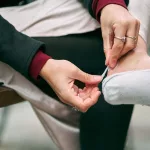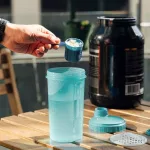A hot stone massage is a form of massage therapy used to promote relaxation and relieve tight muscles and injured soft tissues throughout the body.
In a hot stone massage, smooth, flat, warmed stones are placed on targeted areas of the body. The stones are commonly basalt, a volcanic rock known for retaining heat. According to the University of New Hampshire Health Services, hot massage stones are typically warmed to a temperature between 130 and 145 degrees.

The stones may be positioned:
- along the spine
- on the abdomen
- on the chest
- on the face
- on the palms
- on the feet and toes
Therapists might also hold heated stones while performing Swedish-style massage methods such as:
- long gliding strokes
- circular motions
- vibrations
- tapping
- kneading
Occasionally, cool stones are incorporated into a hot stone treatment. Cold stones can be applied after hot ones to reduce any engorged blood vessels and to calm the skin.
6 benefits of hot stone massage
All massage forms generally fall under complementary and alternative medicine and are increasingly used alongside conventional care. Here are several benefits associated with hot stone massage:
1. Eases muscle tension and pain
Heat has long been applied to relieve muscular tightness and discomfort. It can increase circulation to the treated area, reduce muscle spasms, and improve flexibility and range of motion. Cold therapy can help curb inflammation. Depending on your symptoms, alternating hot and cold stones during the session may be beneficial.
2. Lowers stress and anxiety
The American Massage Therapy Association states that “massage therapy can be effective for stress relief.” Research supports this view. A 2001 study found that a ten-minute massage improved cardiovascular measures like stroke volume. A 1997 study reported that 15-minute chair massages at work significantly lowered stress compared with a 15-minute break without massage.
A 2015 study found that patients who underwent abdominal colorectal surgery experienced reduced pain, tension, and anxiety after receiving post-operative massage.
3. Encourages better sleep
A 2006 literature review suggested massage may serve as an alternative to sleeping medications for adults with insomnia. The review indicated that back massage helped foster relaxation and sleep. A 2001 study showed infants with sleep difficulties who received a 15-minute massage from their parents fell asleep more quickly and were more alert, active, and positive upon waking. While the mechanisms aren’t fully known, massage is believed to contribute to more restorative sleep.
4. May ease symptoms of autoimmune disorders
Hot stone massage might help with painful conditions like fibromyalgia, which causes widespread chronic pain. A 2002 study found people with fibromyalgia who received a 30-minute massage slept longer, had fewer trigger points, and showed lower levels of substance P (a chemical involved in pain transmission) than those who received relaxation therapy. However, more research is needed before massage becomes a standard fibromyalgia treatment.
A 2013 study found that people with rheumatoid arthritis benefited from moderate-pressure massage, such as hot stone massage. Participants reported less pain, improved grip strength, and increased range of motion after one month of massage therapy.
5. May reduce cancer-related symptoms
A large three-year study published in the Journal of Pain and Symptom Management examined massage effects on pain, fatigue, stress and anxiety, nausea, and depression in 1,290 people with cancer. The research showed that massage, particularly Swedish massage, improved cancer-related symptoms, even among people with substantial symptom burdens. Investigators think the soothing element of human touch contributed to these benefits.
6. May support immune function
Massage may positively affect the immune system. According to a 2010 study, a single session of Swedish massage produced an acute beneficial effect on immune markers. Blood tests taken before and after the massage showed a reduction in arginine-vasopressin, a hormone involved in regulating blood pressure and fluid balance.
Who may benefit from a hot stone massage?
Individuals experiencing muscle tightness and pain, insomnia, or stress might find relief from a hot stone massage. If you have a chronic condition that causes pain, consult your physician to determine whether hot stone massage is appropriate for you.
Risks and warnings
When delivered by a qualified therapist, hot stone massage is generally safe. However, there are situations when it should be avoided. Talk to your doctor before receiving a massage if you have:
- a bleeding disorder or are taking blood thinners
- burns on the skin
- open wounds
- a history of blood clots
- had surgery within the past 6 weeks
- a fracture or severe osteoporosis
- a low platelet count (thrombocytopenia)
- diabetes
Prenatal massage can help reduce stress and relieve uncomfortable pregnancy symptoms, but most therapists do not use hot stones on pregnant clients. If pregnant, obtain your doctor’s approval and seek care from a therapist trained in prenatal massage.
To avoid burns, there should always be a barrier, such as a towel or sheet, between hot stones and your skin. Ask your therapist how they heat their stones; a professional massage stone heater ought to be used. Never heat stones with a:
- microwave
- slow cooker
- hot plate
- oven
The bottom line
Research indicates a hot stone massage can be an effective method to reduce stress and anxiety, promote relaxation, and alleviate pain and muscle tension. It may be useful for a range of conditions and situations.
Further research is necessary to clarify exactly why massage therapy produces such strong effects. Human touch likely plays a major role. For many, touch provides a sense of connection and safety.
To ensure a positive hot stone massage experience, choose a therapist trained in working with hot stones. You may feel sore during or the day after your session due to deep tissue work and pressure, but you should not experience pain. If you feel uncomfortable or in pain during the massage, tell your therapist immediately.
Keep reading: 5 tips for easing upper back pain during pregnancy »


















Leave a Reply
You must be logged in to post a comment.